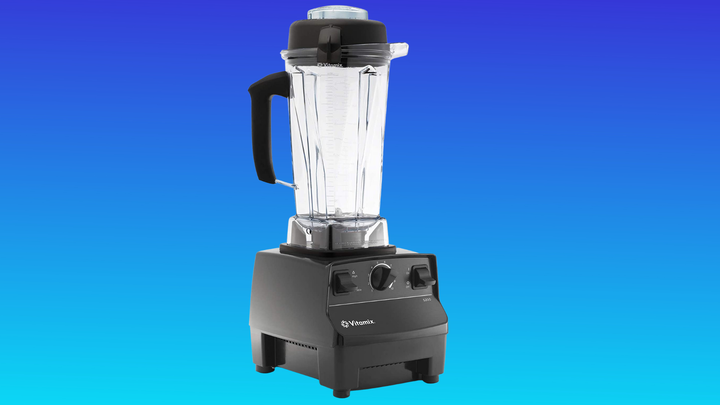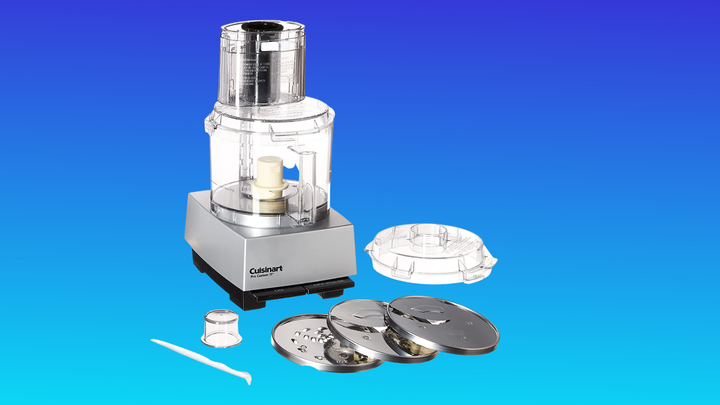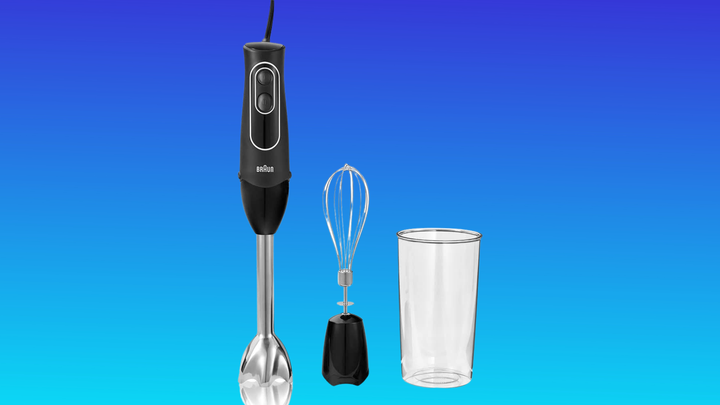They aren’t as interchangeable as you think!
At first glance, a blender, food processor and immersion blender seem pretty similar. But while they all have fast-spinning blades, design differences make each appliance better suited for some tasks than others.
Sure, you can use a food processor to make a smoothie, but the final result might not be as smooth as you want it to be, for several reasons. We chatted with some experts to get a full breakdown on each appliance’s strengths and weaknesses, and asked them which one they’d choose if they could only have one in their kitchen — the answer might surprise you.
Blenders: Best For Liquids Like Smoothies And Soups
When it comes to making morning smoothies or weekend piña coladas, a blender really shines.
Roger Sitrin, lead recreational chef instructor at the Institute of Culinary Education, explained that a blender’s pitcher-shaped container and blades at the bottom are designed to create a vortex. “In a blender, the contents get combined and liquefied quite well,” he said.
Lisa McManus, executive editor of America’s Test Kitchen Reviews, likens this vortex created by well-designed blenders to a mini tornado. “The vortex pulls food down to the blades at the bottom, chops it and sends it back up the sides in a continuous cycle.”
In addition to making “amazingly smooth” and creamy smoothies, McManus notes that high-quality blenders can also be used to make nut butters and mayonnaise. “For nut butters, the bad ones get stuck and can’t fully process the nuts into a creamy texture, and with mayonnaise they need a very low speed,” she said. “Really good blenders can even grind flour. The trick is finding a good one. We have tested blenders at every price level and have seen a tremendous amount of difference depending on design and what you are willing to spend.”

Sitrin uses his high-end Vitamix blender to make pureed soups, sauces and smoothies. “Whenever I need to break something solid and wet into a puree, I use the Vitamix blender,” he said. “Its high-powered engine combined with the propeller-like blades and carefully designed container are very effective at getting all of the contents pureed.”
Food Processors: Best For Chopping Food
A food processor’s blades are like fast-spinning knives that can chop food as coarse or fine as you want it.
“You can watch the texture through the work bowl, and, using the pulse button, literally chop to your desired texture, down to a paste or puree,” McManus said.
It’s a versatile appliance that, with its many attachments, can also be used to shred cheese and potatoes (for latkes!), and make pie crust, pizza dough and bread dough.
“You can make pestos and nut butters and emulsify mayonnaise, drizzling in the oil through the food processor feed tube,” she said. Some food processors also come with flat disks specifically designed for shredding, slicing and dicing. They sit on top of the bowl and you put food through the feed tube.

In general, food processors are best for big-batch cooking as they can be used to chop up a bunch of ingredients quickly, but they’re also useful for smaller projects. What they aren’t as great at are smoothies. McManus notes that with a food processor, it’s hard to get a smooth texture on ingredients like raw kale. Soups are another weakness. “You can puree soups, but you have to ladle in the soup in batches because most food processors can only take a certain limited amount of liquid before they’ll overflow,” she said.
Sitrin added that the pureed soups, sauces and smoothies he makes in his Vitamix blender can be made in a food processor, but it isn’t as convenient. “To do the same thing in my food processor, I need to start and stop it multiple times, scraping down the bowl so that all of the ingredients get combined and pureed,” he said.
Immersion Blenders: Best For Soup
If you’re making a big pot of soup that needs to be pureed, an immersion blender is the most convenient option since you can stick one right into the pot and puree away. Sitrin describes it as a portable blender that’s essentially a stick with a motor at the top and blade at the bottom. “It doesn’t have its own container so you use it in a bowl, pot or some other container like a quart container,” he said.
Sitrin uses a Braun immersion blender whenever he’s making pureed soups, since it’s fast and easy, and means there are no additional dishes to wash. “I can plug it in and use it right in the same pot that I am cooking the soup in,” he said. “No need to transfer anything to alternate containers.” This particular immersion blender also comes with a whisk attachment, which he uses to make whipped cream without having to set up and clean a KitchenAid stand mixer.

Another benefit of an immersion blender is that it can blend smaller amounts of liquid since it can be placed in a quart container or the narrow plastic beaker that often comes with it. McManus notes that they’re good for mixing up salad dressings or mayonnaise in smaller batches. “Immersion blenders can be used to make a smoothie, but they’re not the best choice for that,” she said.
Which One Should You Get?
In an ideal world, there would be unlimited kitchen space and budget to buy all the fancy kitchen equipment your heart desires, but if you can have only one of these, the top consideration is what you will be using it for. If you know you’ll be drinking smoothies every day, investing in a high-quality blender is a great idea. If you don’t make homemade soups, you probably don’t need an immersion blender. There are overlaps between what these three appliances can do, but each is better suited for some purposes than others.
For McManus, a food processor is the obvious choice because of its versatility. “It does many more things than the other two,” she said. “Of course, you need a very good food processor. I’ve tested them extensively and they’re not all great. Our favorite is a solid choice, and performs beautifully across the board.”
Credit: Source link